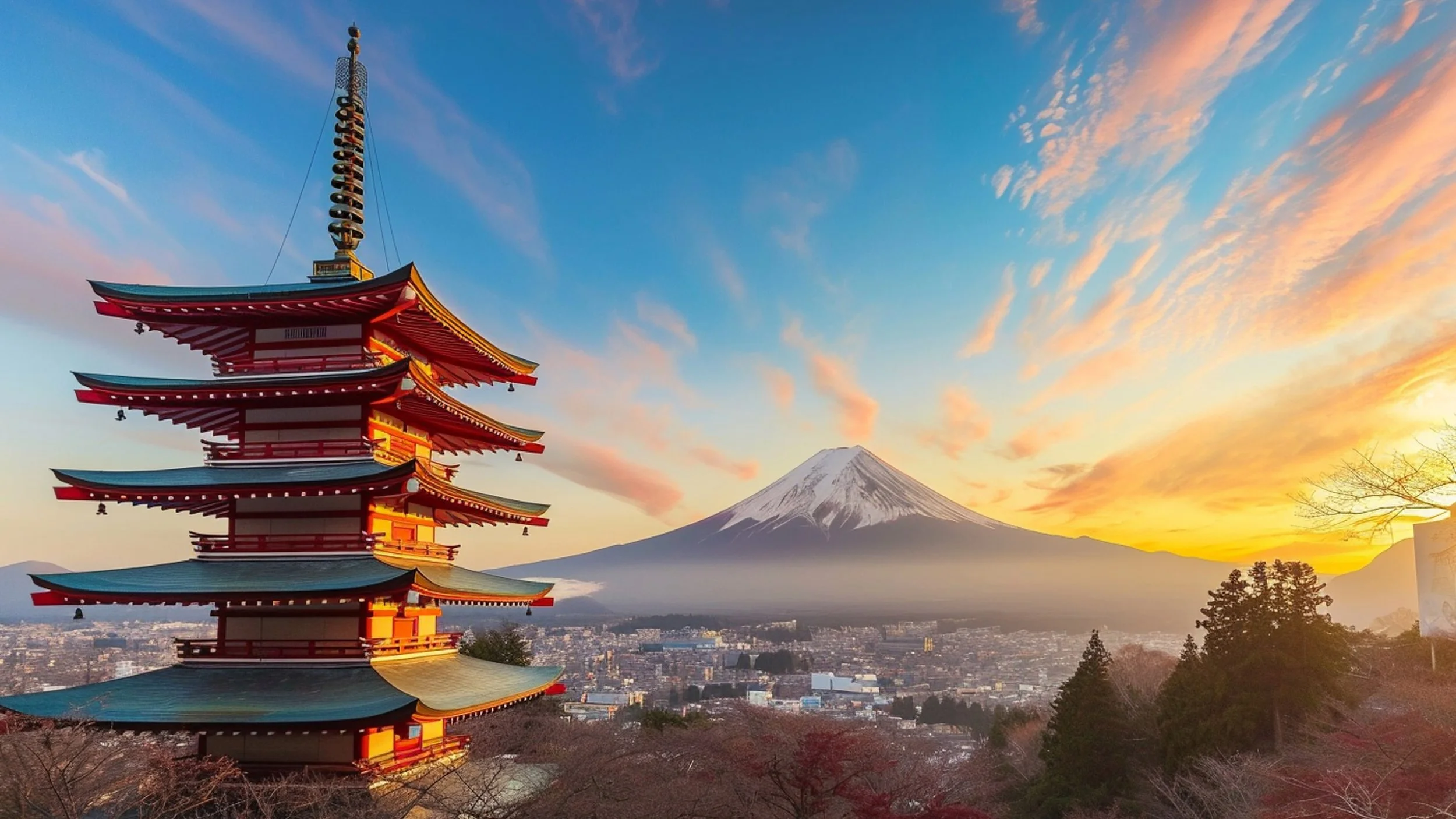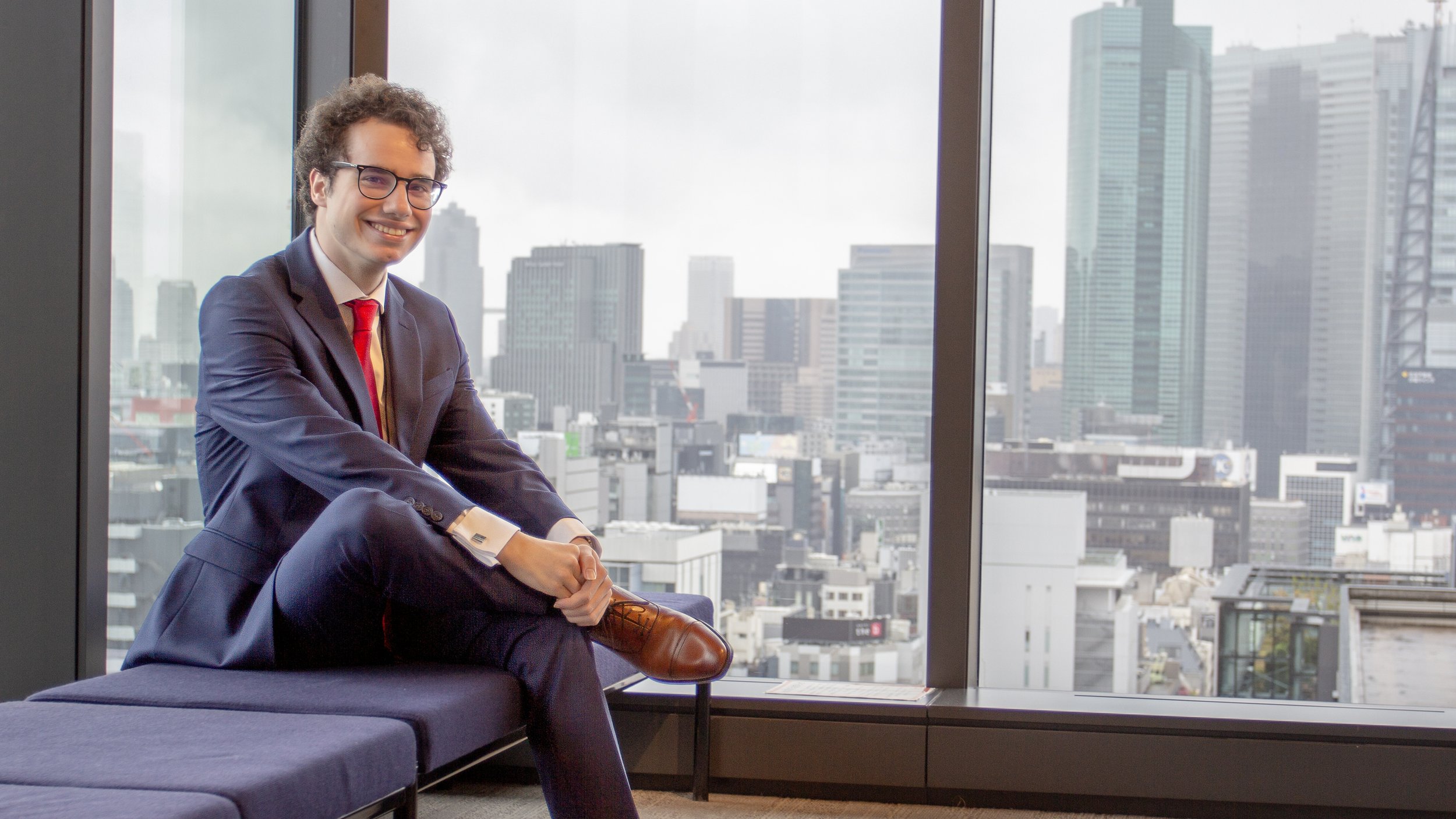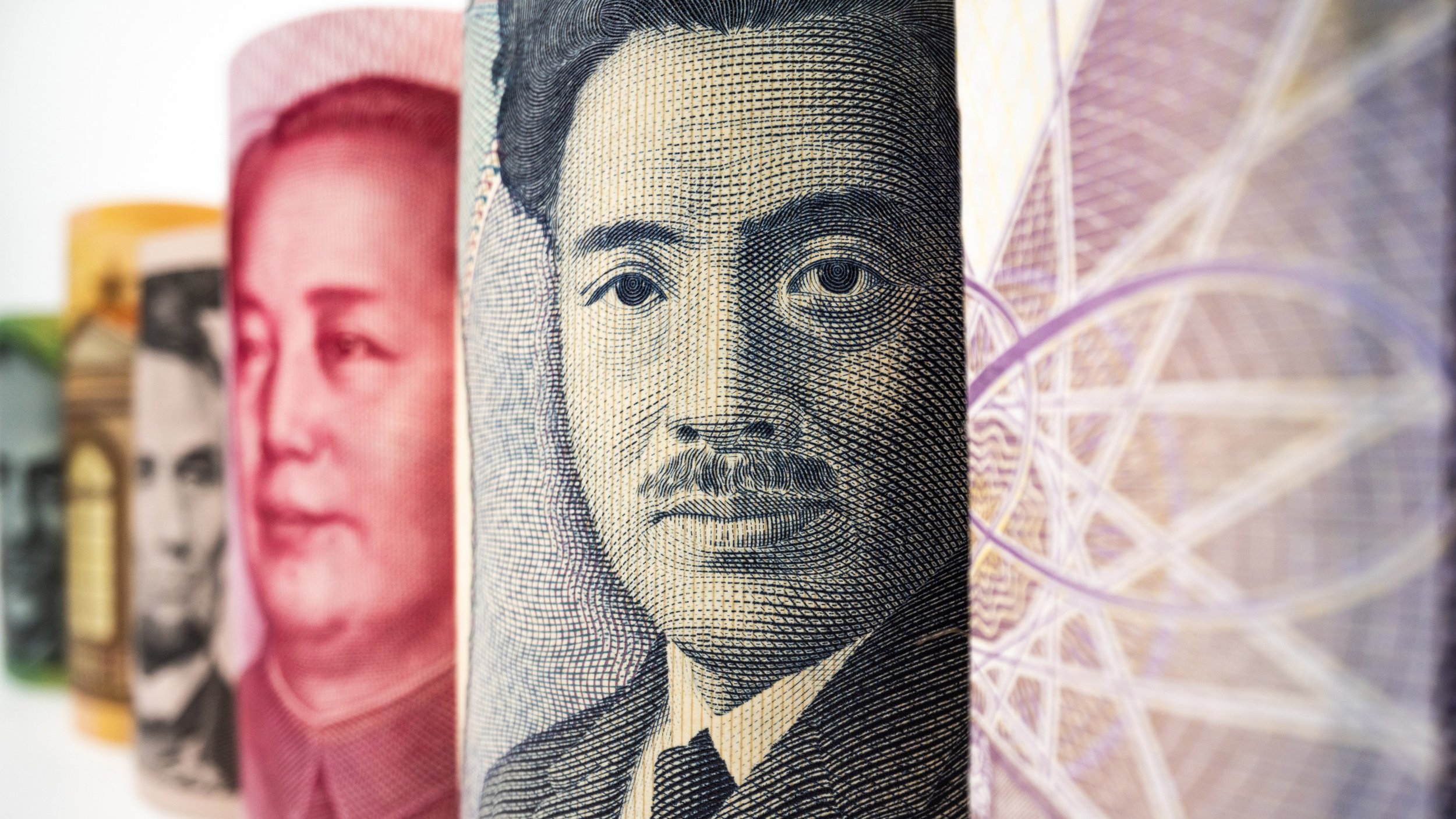Topics
Chubu
This May will mark a major milestone for the ACCJ–Chubu community: the 35th anniversary of the Chubu Walkathon International Charity Festival. You're invited to join the celebration and make a difference.
The ACCJ Chubu chapter hosted the 34th annual Walkathon on May 18 in Nagoya’s Meijo Park to support local charities and improve the lives of the less fortunate.
Meet the 2024 ACCJ Leaders and Volunteers of the years, recognized for extraordinary dedication to the chamber's mission.
Cooperation between the United States and Japan in the space industry is growing stronger and represents a great pathway for innovation in the bilateral relationship. A significant player in the space travel industry in Japan is the Space Port Japan Association (SPJ), which was established in 2018 and is attracting considerable attention on both sides of the Pacific. SPJ co-founder and Representative Director Naoko Yamazaki joined members of the American Chamber of Commerce in Japan (ACCJ) on April 21 for an hour-long online discussion.
On May 22, more than 1,000 participants took part in the 31st Annual Chubu Walkathon International Charity Festival. This year’s event took place on a beautiful Sunday in Nagoya’s Meijo Park and was also livestreamed. More than ¥7 million was raised to support local charities.
While there is much talk in Japan about diversity and inclusion (D&I) in the workplace, another important, though less-discussed, aspect of D&I involves suppliers. Some major companies have long championed diversity in their supply chains, but the issue is now getting more attention—and progress is being made—thanks to the efforts of socially conscious leaders. This was the topic of a November 25 virtual event, hosted by the ACCJ-Chubu Programs Committee and entitled Supplier D&I: Three-Year Journey in the Japanese Market.
When entrepreneurs consider entering the Japanese market, often they eye the nation’s capital as their starting point. The allure of Greater Tokyo, with its population of more than 35 million, is strong. But ask American Chamber of Commerce in Japan (ACCJ) Vice President-Chubu Robert Roche where you should start and he’ll invite you west, to the city of Nagoya.
Now more than ever, Nagoya means business. The Chubu region, and specifically the city of Nagoya, has attracted many large tech companies and manufacturers—from automotive to aerospace—because it offers a skilled and talented workforce, affordable land, and a competitive cost of living. With a dedicated focus on creating an innovation ecosystem, Japan’s fourth-largest city has become an attractive location for small business owners and entrepreneurs.
When the ACCJ kicked off the transformation of its website platform early last year, the process sparked a conversation among members of the Chubu chapter about what digital tools our committee leaders need to succeed in bringing value to members and addressing pain points.
Culture
As a tourist destination for inbound visitors, Fukui Prefecture often gets short shrift, especially compared with more glamorous neighbors such as Kyoto and Ishikawa Prefectures. But this may start to change when the Hokuriku Shinkansen adds Fukui, Tsuruga, Awara Onsen, and Echizen Takefu Stations to its pit stops in March 2024.
Many visitors to Japan are familiar with the Tokaido Shinkansen. What they may not know is that the tracks run alongside an ancient route built not for bullet-train carriages but rather palanquins. We take a tour through Kanagawa Prefecture to explore past and present.
The ACCJ Journal sat down with CIC founder Tim Rowe in the bustling Toranomon Hills networking hub to learn more about how he went from sharing a space with friends to leading a community for entrepreneurs that includes more than 1,000 companies at centers in eight cities around the world.
There are many reasons to visit Fukui, a small tadpole-shaped prefecture facing the Sea of Japan. It’s home to a bevy of traditional crafts, magnificent temples, rugged landscapes, and some of Japan’s best freshly caught winter crab and sweet shrimp. All this begs the question: Why isn’t Fukui more well-known? We take you on a visit.
The glass panel separating the Enoura Observatory’s gallery from Sagami Bay erupts in an orange glow. It’s the summer solstice and the sun rises in perfect alignment with the long, narrow gallery designed by Japanese contemporary artist Hiroshi Sugimoto. The fiery spectacle is just one of the wonders that awaits travelers in Kanagawa Prefecture.
Legacy and vision. Two words that describe and drive Gentaro Nitta’s Nitta Textile Arts and Michiko Yamakuchi’s Yozando. Both are eminent textile enterprises based in Yonezawa City, Yamagata Prefecture, and manifest a celebration of the past as the industry looks toward the future.
Just over an hour by train from Shinjuku, the Godo area of Isehara, Kanagawa Prefecture, lives up to its name, which means “gate of the gods.” The mists rising from nearby Sagami Bay often shroud the peak in mysterious clouds, leading to the nickname Afuri-yama (Mount Rainfall). And tucked away in the lush foothills is Kikkawa Jozo, a century-old sake brewery that is gaining international acclaim.
A stone monument, two or three feet tall, with a simple inscription stood before me. It read: “plants and trees.” Somokuto, as they are known in Japanese, are monuments concentrated mainly in Okitama, a region in southern Yamagata Prefecture in Tohoku, the northern part of Japan’s main island of Honshu. Adam Fulford shares more.
The death of a close friend at college prompted Tohoku native Hiroaki Miyajima to pursue a career in advertising in the United States. Having returned to his hometown of Yonezawa, Yamagata Prefecture, in 2011, he is now part of a local business collective whose mission is to secure the town’s future prosperity. The Ukogi collective, established by Miyajima and several other Kojokan graduates, channels the spirit of Yozan in a bid to grapple with the issues facing Yonezawa and many of Japan’s rural areas.
On November 4, 2021, an evening of culture, flavors, and learning took place at Kojima Sohonten Co., Ltd., Japan’s 13th-oldest sake brewery, established in 1597. Located in Yonezawa, Yamagata Prefecture, Kojima Sohonten is best known for its award-winning Toko sake. When you’re inside the brewery, the dedication and craftsmanship of more than 400 years of brewing seem to infuse the darkened wood of the huge barrels. On this day, however, amid the ongoing travel restrictions, it was innovation—along with multiple cameras—that helped bring the historical setting to travel writers on the east coast of the United States.
Diversity & Inclusion
Diversity and inclusion (D&I) is a noble cause. Over the past decade, many positive changes have been achieved, but there is still a long way to go on the journey to true D&I. But good intentions don’t always guarantee good results. How do we get D&I back on track?
MGM’s Osaka integrated resort project, to be built adjacent to the Expo 2025 site, will be a catalyst for international hires and could spur change in immigration policy.
On its 10th anniversary, the Kansai D&I Summit emphasized the importance of unity and collaboration in driving meaningful change.
Offices in Japan have seen a revolution over the past two years or so, with the pandemic having ushered in the need for remote work. as living with Covid-19 has become standard, many businesses have back-pedaled or adapted their approach as they navigate a return to the office. Others have come to see the new normal as an opportunity to reflect on where, when, and how employees work, to foster greater productivity, and expand their diversity, equity, and inclusion efforts.
Shaping workplace culture and inclusion. Leading the change. These are the themes of the 2022 ACCJ-Kansai Diversity and Inclusion Summit, which will again follow the format of three two-hour online sessions, to be held over successive weeks in October and November.
Tamao Sasada, Japan country executive for Bank of America and president of BofA Securities Japan, sits down with The ACCJ Journal to share her thoughts on a number of topics, including how Japan can push the DEI and ESG agendas forward.
While there is much talk in Japan about diversity and inclusion (D&I) in the workplace, another important, though less-discussed, aspect of D&I involves suppliers. Some major companies have long championed diversity in their supply chains, but the issue is now getting more attention—and progress is being made—thanks to the efforts of socially conscious leaders. This was the topic of a November 25 virtual event, hosted by the ACCJ-Chubu Programs Committee and entitled Supplier D&I: Three-Year Journey in the Japanese Market.
It has been two decades since the Japanese government set its target of having women in 30 percent of management positions by 2020. The country has fallen far short of that goal, which the government has pushed off to 2030. Titan Consulting K.K. Business Development Manager Sophia Plessier certainly noticed the imbalance on her arrival in Japan. Coming from San Francisco, where discussion of diversity and inclusion (D&I) and support for women in business are a part of everyday life, she found it striking how few Japanese companies were promoting these important issues.
The Japanese government calls it a “digital cliff”—a projected shortfall of 450,000 engineers, programmers, and other tech workers needed by 2030 to undertake the country’s digital transformation. Harnessing the largely untapped potential of Japanese women—who are drastically underrepresented in science, engineering, and computer programming jobs and college degrees—could help narrow that gap.
The 7th Annual ACCJ Kansai Diversity & Inclusion Summit took place over the course of three days—October 4, 13, and 21—in a new series format that delivered a blend of inspiration and practical information sharing. With a focus on diversity-and-inclusion (D&I) initiatives, as well as equality in the workplace, the series featured keynote and plenary speakers, a fireside chat, training sessions, and remote networking.
Over the past decade, Japan has gone from less than one percent of directors at Japanese companies being female to about 10 percent at many of the larger organizations. How Japanese companies might be encouraged to overcome their apparent reluctance to welcome women into their boardrooms was the topic of a November 15, 2021, ACCJ virtual event, entitled Injecting Diversity through Outside Directors.
Economy
With Japan uniquely positioned to emerge as a true 21st-century global leader, Jesper Koll asks who will write the rules governing our future?
Jesper Koll explains why Japan is open for business despite the turmoil and uncertainty sweeping the world.
With the Year of the Snake poised to be a good one for Japan, renowned economist Jesper Koll predicts 10 possible twists for the year to come.
The ACCJ Financial Services Forum sets out a three-pronged strategy for stronger market policies in its latest white paper.
Japan has steadily reclaimed its status as a top destination. It is no longer a question of if Japan will recover from the pandemic, but rather how it will rise to the challenge of serving up its famous omotenashi to so many visitors.
Qualitative predictions are based on a combination of experience and intuition. Like an inspired jazz solo, they deliver a genuine surprise that you did not expect but cannot live without once you’ve heard it. What unexpected riffs does 2024 have in store for Japan? Jesper Koll shares 10 twists and turns that could make for an interesting Year of the Dragon.
The year 2023 will go down in history as the moment when global investors began to take a serious interest in Japan. Jesper Koll shares the four Japan megatrends you and your corporate strategy must seek to exploit.
They are not really part of the global Davos jet set. Many still proudly print a fax number on their cards. And in the age of the short quip, they lack a strong social media presence. But if you’re looking for extraordinary resilience and all-around competence, Japan’s salaryman CEOs have a very impressive track record, explains Jesper Koll.
Surprises are the spice of life that make us perk up and challenge our baseline assumptions. And what better time to sprinkle them on than the start of a new year? Of course, there will always be a surprise or two, but here is my annual list of possible surprises that could add up to a heaping load for Japan in 2023. Whichever may come to be, I wish a happy, healthy, and prosperous new year to all!
Nowadays, it is common to hear and to read in the news that the world is experiencing unprecedented supply chain woes. China lacks coal and paper. The United States has a shortage of toilet paper and toys. And India is low on microchips. Why is this happening? Here are four current issues that negatively impact the world’s supply chains.
Education
Bringing more than 160 years of UK educational history to western Tokyo, Malvern College’s Kodaira campus offers an international learning environment with small classes, outstanding facilities, and and strong support.
For many travelers, Niseko is synonymous with winter. But with year-round operations, MnK is offering programs that help children build confidence, develop problem-solving skills, and forge friendships that extend beyond summer.
Faced with a dwindling workforce, companies in Japan are locked in fierce competition to find young talent who can carry the organization forward and inject it with fresh ideas and vitality. Many overlook an option that offers tremendous advantages for employers and students alike: internships.
Isabella Boulware shares her experiences interning at the ACCJ and how the Bishop Family Memorial Scholarship continues to open doors for young talent.
For more than 36 years, The British School in Tokyo (BST) has welcomed families from around the world. In 2025, BST was named to the Spear’s Index Top 100 Private Schools in the World list—recognition of its continued commitment to educational excellence.
As the world changes, the future may depend on empowering women and amplifying their voices. The Asian University for Women‘s April fundraiser helps make education possible.
The British School in Tokyo is moving from A Levels to the International Baccalaureate.
As his time as the first Bishop Memorial Scholar draws to a close, we sit down with Matthew Trani to learn about the experience and how he hopes to maintain his ACCJ connections.
Matthew Trani, the first recipient of the Bishop Family Memorial Scholarship Fund, arrived in September. The Long Island native shares his path to Japan and where he hopes the opportunity will lead him.
On June 12, the ACCJ and the United States–Japan Bridging Foundation gathered at Tokyo American Club to honor the family and launch the Bishop Family Memorial Scholarship Fund at an event entitled Lives Lived for Bridging the United States and Japan.
Entrepreneurship
Finding a doctor and overcoming the language barrier can be a challenge. ROAM Medical helps you get the care you need wherever you need it.
The ACCJ Journal sat down with CIC founder Tim Rowe in the bustling Toranomon Hills networking hub to learn more about how he went from sharing a space with friends to leading a community for entrepreneurs that includes more than 1,000 companies at centers in eight cities around the world.
Starting a business anywhere is a demanding endeavor, but doing so in Japan presents its own particular set of hurdles and idiosyncrasies. For those who can navigate the process, however, there are many rewards to be had. Although the dynamics can vary widely depending on the industry, the top challenges facing startups in Japan include simply breaking into the market, language and cultural differences, the time it takes to build a customer base, bureaucratic requirements, and difficulties raising money.
When entrepreneurs consider entering the Japanese market, often they eye the nation’s capital as their starting point. The allure of Greater Tokyo, with its population of more than 35 million, is strong. But ask American Chamber of Commerce in Japan (ACCJ) Vice President-Chubu Robert Roche where you should start and he’ll invite you west, to the city of Nagoya.
Ever since third grade, when my stepfather took me to a store where we bought a rubber stamp emblazoned with Jones Inc., the entrepreneurial spirit has been part of me. This spirit is one reason I enjoy working with so many talented and inspiring businesspeople through the ACCJ to share stories of ideas brought to life and the determination to succeed as an expat.
Now more than ever, Nagoya means business. The Chubu region, and specifically the city of Nagoya, has attracted many large tech companies and manufacturers—from automotive to aerospace—because it offers a skilled and talented workforce, affordable land, and a competitive cost of living. With a dedicated focus on creating an innovation ecosystem, Japan’s fourth-largest city has become an attractive location for small business owners and entrepreneurs.
If the future of Earth as we know it is to be secured, not just for ourselves but for generations to come, the way we do business has to change. That was the conclusion of scientists in a recently released report by the Intergovernmental Panel on Climate Change (IPCC), a body under the mandate of the United Nations. Serial entrepreneur Priya Sultan agrees with the report’s conclusions, adding that the education system—in addition to business practices—must be upgraded.
Events
Diversity and inclusion (D&I) is a noble cause. Over the past decade, many positive changes have been achieved, but there is still a long way to go on the journey to true D&I. But good intentions don’t always guarantee good results. How do we get D&I back on track?
Members of the American Chamber of Commerce in Japan (ACCJ) and their guests gathered in the Hilton Tokyo’s Kiku Ballroom on December 11 to close out 2025 with its final signature event of the year.
The ACCJ Healthcare x Digital (HxD) initiative reached a new milestone on December 2 with its first-ever exclusive mentorship event for healthcare startups at Nakanoshima Qross in Osaka.
As arrivals boom, can the country’s hospitality industry keep pace through a new era of omotenashi? That was the question at the center of an ACCJ event hosted on October 8, featuring Tokyo Governor Yuriko Koike.
This May will mark a major milestone for the ACCJ–Chubu community: the 35th anniversary of the Chubu Walkathon International Charity Festival. You're invited to join the celebration and make a difference.
The ACCJ recognizes the 2025 Leaders and Volunteers of the Year for stellar contributions across its three chapters.
A delegation of seven leaders from the American Chamber of Commerce in Japan (ACCJ) traveled to Washington, DC in December for the 2025 DC Doorknock. The visit carried forward momentum from April’s DC recon trip and reinforced the chamber’s sustained engagement with US policymakers.
The ACCJ honors the USA Pavilion commissioner general for his support of Expo 2025 and bilateral relations.
Food and Drink
Just over an hour by train from Shinjuku, the Godo area of Isehara, Kanagawa Prefecture, lives up to its name, which means “gate of the gods.” The mists rising from nearby Sagami Bay often shroud the peak in mysterious clouds, leading to the nickname Afuri-yama (Mount Rainfall). And tucked away in the lush foothills is Kikkawa Jozo, a century-old sake brewery that is gaining international acclaim.
Is this a glimpse of the future of food? Japanese scientists and companies are developing 3D food printers to produce sushi, *wagyu*, and a host of other foods. They say the technology holds great promise for personalizing food to meet nutritional needs, reducing food waste, and even providing something to eat during extended space travel. “I think there’s huge potential. Food itself will probably change,” said Yamagata University’s Hidemitsu Furukawa.
Chinese noodles first gained popularity in Japan in 1859, when centuries of isolation ended and the port of Yokohama opened for international trade. Yokohama, a short jaunt south from Tokyo, prides itself on serving some of the country’s best ramen, and has two museums to celebrate the cheap, delicious, and filling meal.
On November 4, 2021, an evening of culture, flavors, and learning took place at Kojima Sohonten Co., Ltd., Japan’s 13th-oldest sake brewery, established in 1597. Located in Yonezawa, Yamagata Prefecture, Kojima Sohonten is best known for its award-winning Toko sake. When you’re inside the brewery, the dedication and craftsmanship of more than 400 years of brewing seem to infuse the darkened wood of the huge barrels. On this day, however, amid the ongoing travel restrictions, it was innovation—along with multiple cameras—that helped bring the historical setting to travel writers on the east coast of the United States.
Foreign Direct Investment
Deloitte Tohmatsu’s Japan Incentive Insights web tool helps companies find opportunities to invest in Japan.
In 2020, Japan experienced a significant inbound FDI decline, in the wake of what had been a steady increase over several years prior to the pandemic in sectors such as retail and e-commerce. Outbound FDI by Japanese companies looking to collaborate with, or acquire, overseas enterprises had also been on the rise. Which leads one to ask: What’s the outlook for inbound FDI here—and the rest of the world, for that matter—post-Covid-19?
One hundred ninety-sixth out of 196 countries. Just behind North Korea. That’s how Japan ranked in 2019 when the United Nations Conference on Trade and Development (UNCTAD) measured the cumulative stock of inward foreign direct investment (FDI) as a share of gross domestic product (GDP).1 FDI ranges from foreign companies setting up new facilities to them buying domestic companies. What a shocking result considering the 20 years Tokyo has spent trying to increase its cumulative stock of FDI. Unless policymakers understand why past efforts have failed, Tokyo is unlikely to realize the new goal it announced in June: to hike inward FDI to 12 percent of GDP by 2030.
Two recent papers produced by committees of the ACCJ have highlighted the considerable opportunities that would result from changes to regulations that currently hinder Japan’s financial sector from attaining its full potential. And with the Japanese government committed to raising Tokyo’s profile as one of the world’s top financial centers, the committees are hopeful that regulatory authorities here might embrace some of the proposals.
Kansai
The ACCJ Healthcare x Digital (HxD) initiative reached a new milestone on December 2 with its first-ever exclusive mentorship event for healthcare startups at Nakanoshima Qross in Osaka.
Ashiya City Mayor Ryosuke Takashima shared his vision for the future and his commitment to open dialogue with citizens at an event hosted by the ACCJ Kansai chapter on March 27.
Meet the 2024 ACCJ Leaders and Volunteers of the years, recognized for extraordinary dedication to the chamber's mission.
On its 10th anniversary, the Kansai D&I Summit emphasized the importance of unity and collaboration in driving meaningful change.
The annual HxD Pitch Day brought together five innovative start-ups that are bringing healthcare innovation to a changing world.
The ACCJ Kansai chapter recently led a series of events that brought together community members, businesses, and organizations in an awe-inspiring effort to foster sustainable gardening practices and address food insecurity in the region.
Shaping workplace culture and inclusion. Leading the change. These are the themes of the 2022 ACCJ-Kansai Diversity and Inclusion Summit, which will again follow the format of three two-hour online sessions, to be held over successive weeks in October and November.
The 7th Annual ACCJ Kansai Diversity & Inclusion Summit took place over the course of three days—October 4, 13, and 21—in a new series format that delivered a blend of inspiration and practical information sharing. With a focus on diversity-and-inclusion (D&I) initiatives, as well as equality in the workplace, the series featured keynote and plenary speakers, a fireside chat, training sessions, and remote networking.
One of the most noticeable aspects of digitalization has been the shift from traditional television to on-demand streaming video. But even before the coronavirus boosted demand, these companies were experiencing a shortage of high-quality animated content. ACCJ 2018 Volunteer of the Year Royi Akavia sees this as foundation for telling stories that make a difference using original characters to which children can relate.
Healthcare x Digital 2021 will carry forth the goal of forging new partnerships and creating new solutions to solve Japan’s most critical community healthcare and individual patient challenges by focusing on three key areas tied to the digital transformation of society and which can help Japan continue to take care of—and provide even better care for—all its citizens.
Healthcare
The ACCJ Healthcare x Digital (HxD) initiative reached a new milestone on December 2 with its first-ever exclusive mentorship event for healthcare startups at Nakanoshima Qross in Osaka.
Falling ill far from home can feel unsettling, even in a world-class metropolis such as Tokyo. Tokyo Medical Concierge offers clear, compassionate care in English.
Lilly Japan’s Simone Thomsen reflects on six years of leading with purpose and ACCJ collaboration.
The annual HxD Pitch Day brought together five innovative start-ups that are bringing healthcare innovation to a changing world.
Finding a doctor and overcoming the language barrier can be a challenge. ROAM Medical helps you get the care you need wherever you need it.
Rob Claar, CEO and founder of healthcare investment, development, and commercialization platform HekaBio joins us to discuss how overseas healthcare companies can gain regulatory approval in Japan and put their innovations in the hands of Japanese doctors and patients.
ChatGPT may be all the buzz right now, but it's just one of the digital tools transforming virtually all industries, including healthcare. ACCJ leaders share their views on how digital transformation can benefit patients as well as those charged with caring for them.
The 2022 HxD event was modeled on the concept of ideathons, or workshop-like gatherings of groups tasked with challenges for which they are to propose solutions. Through this model, a total of 86 ideators, facilitators, and mentors worked together through a cyclic ideation process to identify root causes and develop the next big project in healthcare.
In recent years, Japan has seen a boost in femtech. The portmanteau of female and technology refers to services using tech and products that help improve women’s health. Government support and media coverage have enabled femtech business offerings to move from niche to mainstream. But how soon might the fledgling industry take off as it has in the United States and Europe? The ACCJ Journal spoke with experts to explore prospects for femtech in Japan.
For millions of people around the world who were already struggling with mental health issues, the past two-and-a-half years of the coronavirus pandemic have been a further trial. Isolation, a sudden shortage of opportunities to interact with friends or family in person, additional stresses in the workplace or the home, new financial worries, and difficulty in accessing appropriate mental healthcare have taken their toll, experts in the field told The ACCJ Journal.
As we enter the third year of the coronavirus pandemic, two societal needs have become crystal clear: healthcare and digitalization. The combination of the two could bring some of the most impactful changes to Japan and the world by improving the quality of life, reducing the cost of care, and allowing society to better cope with future crises. Bringing them together is exactly what the ACCJ has done with its Healthcare x Digital (HxD) initiative, which began in 2020 and reached new heights in its second year.
Since the onset of the Covid-19 pandemic, the biopharmaceutical industry has come together in unprecedented ways to attack the virus, and we have achieved incredible progress in just two years. The industry was able to develop vaccines in just 12 to 18 months, and almost 11 billion doses have been administered worldwide. To put this success in perspective, it typically takes eight to 10 years to develop a vaccine, and the overall success rate is only 5 to 10 percent. But our work is far from over.
University and government venture funds play a much larger role in Japan than they do in Western countries. Yet we see fewer biotechnology startups here compared with, say, the United States, which is home to eight of the top 10 highest-funded ventures. Why?
It has been two decades since the Japanese government set its target of having women in 30 percent of management positions by 2020. The country has fallen far short of that goal, which the government has pushed off to 2030. Titan Consulting K.K. Business Development Manager Sophia Plessier certainly noticed the imbalance on her arrival in Japan. Coming from San Francisco, where discussion of diversity and inclusion (D&I) and support for women in business are a part of everyday life, she found it striking how few Japanese companies were promoting these important issues.
As a super-aging society with a population of more than 100 million, Japan has the potential to become a destination for healthcare innovation. Its citizens have easy and equal access to quality healthcare services, with pharmaceuticals and medical devices playing important roles in improving quality of life. But there are technological obstacles to overcome. The US medical device industry is leading the effort to develop a data platform in Japan which will enable traceability in healthcare.
One year ago, we featured Dr. Tatsuya Kondo on the cover of The ACCJ Journal. The American Chamber of Commerce in Japan (ACCJ) had recognized him for his contributions to the healthcare industry with the 2020 ACCJ Outstanding Achievement Award. Dr. Kondo played a key role in Japan’s healthcare efforts as chief executive of the Pharmaceuticals and Medical Devices Agency (PMDA) from 2008 to 2019. Sadly, he passed away on September 26 after a battle with prostate cancer. ACCJ members shared thoughts and memories with The ACCJ Journal about what Dr. Kondo meant to them and the industry.
The Japanese public is concerned that domestic pharmaceutical companies have yet to launch a single Covid-19 vaccine. Some may argue that this is due to a low rate of vaccine confidence, as is seen in the national tendency to avoid the human papillomavirus (HPV) vaccine, which has, in turn, caused a problem for vaccine development.
Healthcare x Digital 2021 will carry forth the goal of forging new partnerships and creating new solutions to solve Japan’s most critical community healthcare and individual patient challenges by focusing on three key areas tied to the digital transformation of society and which can help Japan continue to take care of—and provide even better care for—all its citizens.
Japan faces a very modern problem: its success in delivering universal health coverage and fostering longer life expectancy has led to demographic and social changes that are giving rise to a new set of interconnected healthcare challenges. As the Japanese government moves to reform its healthcare system to address these challenges, new policy approaches will be necessary. With the right approach and policies, Japan can continue to improve the health of its citizens and create a blueprint that aging societies around the world can follow.
One reason that foreign companies choose to invest in Japan is the nation’s high-quality manufacturing and services sectors, as well as its technological prowess and innovative workforce. Maintaining the health of the population—beyond the immediate challenges of Covid-19—is, therefore, critical to the future prosperity of the country and the viability of its business environment.
Media
One of the most noticeable aspects of digitalization has been the shift from traditional television to on-demand streaming video. But even before the coronavirus boosted demand, these companies were experiencing a shortage of high-quality animated content. ACCJ 2018 Volunteer of the Year Royi Akavia sees this as foundation for telling stories that make a difference using original characters to which children can relate.
Members
Newport Ltd. President and 27-year ACCJ member Kevin McAuliffe shares his business experience in Japan.
After nearly a decade as president and chief executive officer of AIG Japan Holdings KK, American Chamber of Commerce in Japan (ACCJ) member Robert Noddin retired this year. The ACCJ Journal talked to him about his experiences with the chamber and why he encourages professionals to get involved.
The American Chamber of Commerce in Japan (ACCJ) has lost a longtime member and leader, Robert “Skipp” Orr, who passed away on August 12 due to heart failure at his home in Kamakura. He was 68. Orr played a key role in US–Japan relations over many decades and helped lead the ACCJ during the 1990s as a governor (1995–96) and vice president (1997–99). He guided Boeing Japan K.K. as president from 2002 to 2007 and served as chairman of the board of the Panasonic Foundation from 2007 to 2010.
Startups
The annual HxD Pitch Day brought together five innovative start-ups that are bringing healthcare innovation to a changing world.
Rob Claar, CEO and founder of healthcare investment, development, and commercialization platform HekaBio joins us to discuss how overseas healthcare companies can gain regulatory approval in Japan and put their innovations in the hands of Japanese doctors and patients.
The ACCJ Journal sat down with CIC founder Tim Rowe in the bustling Toranomon Hills networking hub to learn more about how he went from sharing a space with friends to leading a community for entrepreneurs that includes more than 1,000 companies at centers in eight cities around the world.
If renewable energy production is not doubled by 2030, power outages and energy system disruptions could become everyday affairs. To help the international community rise to what may be this generation’s greatest challenge, and to showcase some of the technologies that will assist the world in meeting it, the Ministry of Economy, Trade and Industry (METI) organized Tokyo GX (Green Transformation) Week. The 10-day event ran from September 26 to October 7.
There are 488 unicorns in the United States and 170 in China. Japan is home to just 11. The Ministry of Economy, Trade and Industry (METI) is on a mission to narrow this gap. In June, Japan’s Cabinet Office approved the Grand Design and Action Plan for a New Form of Capitalism: Investing in People, Technology, and Startups. The plan includes the formulation of a five-year roadmap for nurturing Japan’s startup ecosystem.
University and government venture funds play a much larger role in Japan than they do in Western countries. Yet we see fewer biotechnology startups here compared with, say, the United States, which is home to eight of the top 10 highest-funded ventures. Why?
Starting a business anywhere is a demanding endeavor, but doing so in Japan presents its own particular set of hurdles and idiosyncrasies. For those who can navigate the process, however, there are many rewards to be had. Although the dynamics can vary widely depending on the industry, the top challenges facing startups in Japan include simply breaking into the market, language and cultural differences, the time it takes to build a customer base, bureaucratic requirements, and difficulties raising money.
When entrepreneurs consider entering the Japanese market, often they eye the nation’s capital as their starting point. The allure of Greater Tokyo, with its population of more than 35 million, is strong. But ask American Chamber of Commerce in Japan (ACCJ) Vice President-Chubu Robert Roche where you should start and he’ll invite you west, to the city of Nagoya.
Now more than ever, Nagoya means business. The Chubu region, and specifically the city of Nagoya, has attracted many large tech companies and manufacturers—from automotive to aerospace—because it offers a skilled and talented workforce, affordable land, and a competitive cost of living. With a dedicated focus on creating an innovation ecosystem, Japan’s fourth-largest city has become an attractive location for small business owners and entrepreneurs.
If you had two minutes with the new prime minister, to give your best-shot advice on how to create a better economic future for Japan, what would you say? From a macro perspective, by far the best answer is: Do whatever you can to make Japan a startup nation. But where does economic growth come from? Not from the stuff politicians and technocrats talk about most of the time—e.g., monetary, fiscal, or trade policy. And importantly, it doesn’t come from population growth. It comes from entrepreneurs.
Technology
Japan’s space sector charts a bold course at Expo 2025.
As artificial intelligence sweeps the world, there is growing concern. Cisco is ensuring that it is powerful, efficient, and safe.
Look back at how members viewed the potential of AI in 1988 in this reprint from the ACCJ Journal archives.
As AI evolves, businesses are turning to custom LLMs to unlock corporate resources.
Since the introduction of consumer-facing artificial intelligence applications such as ChatGPT and Google’s Bard, generative AI has transformed how people work around the world. How might it impact specific industries in the years to come?
ACCJ member Ted Sato shares how his new cybersecurity book, written in collaboration with Keidanren, came about and discusses the issues it addresses.
To help Japan capture a market forecast to grow to up to $4 trillion by 2040, METI has created an $8 billion fund to support biomanufacturing, a field that encompasses technologies which leverage genetic technology to maximize the ability of microorganisms to produce substances.
If renewable energy production is not doubled by 2030, power outages and energy system disruptions could become everyday affairs. To help the international community rise to what may be this generation’s greatest challenge, and to showcase some of the technologies that will assist the world in meeting it, the Ministry of Economy, Trade and Industry (METI) organized Tokyo GX (Green Transformation) Week. The 10-day event ran from September 26 to October 7.
There are 488 unicorns in the United States and 170 in China. Japan is home to just 11. The Ministry of Economy, Trade and Industry (METI) is on a mission to narrow this gap. In June, Japan’s Cabinet Office approved the Grand Design and Action Plan for a New Form of Capitalism: Investing in People, Technology, and Startups. The plan includes the formulation of a five-year roadmap for nurturing Japan’s startup ecosystem.
While the number of Japanese companies active in Africa has doubled over the past decade to more than 900, Japan continues to lag the European Union, the United States, China, and India. The Ministry of Economy Trade and Industry (METI) is focused on encouraging Japanese businesses to support sustainable growth in Africa through projects that address vital social needs, leverage digital transformation, provide technical skills training, and boost renewable power generation.
Travel and Tourism
As arrivals boom, can the country’s hospitality industry keep pace through a new era of omotenashi? That was the question at the center of an ACCJ event hosted on October 8, featuring Tokyo Governor Yuriko Koike.
Tokyo Governor Yuriko Koike headlines a special ACCJ event on the future of tourism.
Japan has steadily reclaimed its status as a top destination. It is no longer a question of if Japan will recover from the pandemic, but rather how it will rise to the challenge of serving up its famous omotenashi to so many visitors.
As a tourist destination for inbound visitors, Fukui Prefecture often gets short shrift, especially compared with more glamorous neighbors such as Kyoto and Ishikawa Prefectures. But this may start to change when the Hokuriku Shinkansen adds Fukui, Tsuruga, Awara Onsen, and Echizen Takefu Stations to its pit stops in March 2024.
Many visitors to Japan are familiar with the Tokaido Shinkansen. What they may not know is that the tracks run alongside an ancient route built not for bullet-train carriages but rather palanquins. We take a tour through Kanagawa Prefecture to explore past and present.
There are many reasons to visit Fukui, a small tadpole-shaped prefecture facing the Sea of Japan. It’s home to a bevy of traditional crafts, magnificent temples, rugged landscapes, and some of Japan’s best freshly caught winter crab and sweet shrimp. All this begs the question: Why isn’t Fukui more well-known? We take you on a visit.
The glass panel separating the Enoura Observatory’s gallery from Sagami Bay erupts in an orange glow. It’s the summer solstice and the sun rises in perfect alignment with the long, narrow gallery designed by Japanese contemporary artist Hiroshi Sugimoto. The fiery spectacle is just one of the wonders that awaits travelers in Kanagawa Prefecture.
It isn’t easy to do business when you’re standing outside staring through the window. But that’s the situation so many found themselves in during much of the pandemic, thanks to some of the world’s most stringent border restrictions. Japan finally reopened its borders to mostly normal travel, including visa-free entry in October 11. We look ahead at the journey past and ahead.
Hakuba Hotel Group (HHG) has been a driving force behind the development of the area over the past 10 years and manages a portfolio of more than 50 premium chalets and apartments situated in prime locations surrounding the Happo-One Resort. ACCJ members get 10 percent off at any HHG property this winter.
Chinese noodles first gained popularity in Japan in 1859, when centuries of isolation ended and the port of Yokohama opened for international trade. Yokohama, a short jaunt south from Tokyo, prides itself on serving some of the country’s best ramen, and has two museums to celebrate the cheap, delicious, and filling meal.







































































































